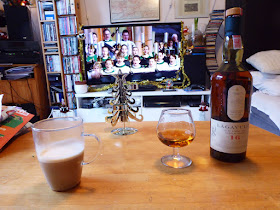It was still the standard type of bottled beer when I started drinking in the early 1970s. Which is probably why I rarely drank bottled beers. With modest gravities and hopping, little flavour was left after the heavy processing required to produce it. There was one big exception: Guinness Extra Stout. There was a bottled beer I drank regularly. Usually because there was either no cask beer or it was crap.
The occurrence of the word "bright" in the name of many of this type of bottled beer indicates how important clarity was for drinkers. Haze would make such beers unsaleable. As we look at this type of beer more closely you'll see how vital producing haze-free bottled beer was for the brewer. As we look at this type of beer more closely you'll see how vital producing haze-free bottled beer was for the brewer.
Jeffery starts with a slightly odd assertion.
“Bright Bottled BeersThe necessary conditions for brewing a beer suitable for bottling have already been dealt with in Chapter 5 and little more need be added here. As to the advisability of making separate brews for draught and bottled beers, this will depend upon the brewing conditions. Many brewers consider that on no account should a beer for bottling be brewed in the same gyle as draught beer, but, on the other hand, many breweries successfully combine the two and, providing the quality of the malt, the mashing conditions and so on are suitable, this can be done quite successfully. The mistake should not be made of thinking that fine filtration will remove all danger of haze and compensate for poor materials or carelessness in brewing. On the contrary, such defects in the beer will increase the chances of haze formation in bottle.”"Brewing Theory and Practice" by E. J. Jeffery, 1956, page 332.
Let’s just say that I’ve seen plenty of brews from which both bottled and draught beer were produced. Whitbread, for example, parti-gyled all their Porters and Stouts, whether they were to be sold on draught or in bottles. As did Barclay Perkins. IBST, the original Russian Stout, was usually parti-gyled with their draught Porter.
Reading between the lines, it looks as if some brewers used lower-quality materials for their draught beers. Which definitely wasn’t the case at Whitbread. They seem to have been careful to use good-quality ingredients for all their beers.
Something about conditioning vessels next:
“Bright bottled beers are almost always now conditioned in bulk, chilled and carbonated. Bulk conditioning has many advantages in ease of handling and control as well as lower losses.”
"Brewing Theory and Practice" by E. J. Jeffery, 1956, page 332.
What does that mean? It’s referring to the older practice of conditioning beer in either hogsheads or vats. Bass Pale Ale, for example, was filled into hogsheads which were delivered to bottlers or other brewers. I’m pretty sure this continued up until at least WW II. Probably finally dying out when Bass took all bottling in house. The advantage of a large tank over wooden hogsheads is pretty obvious.
Next we’ll be looking at the different types of conditioning tank.


































